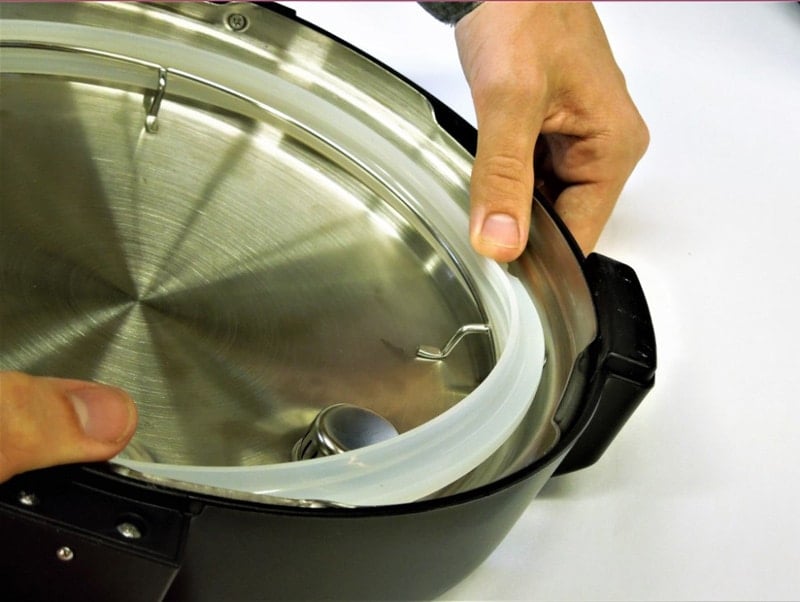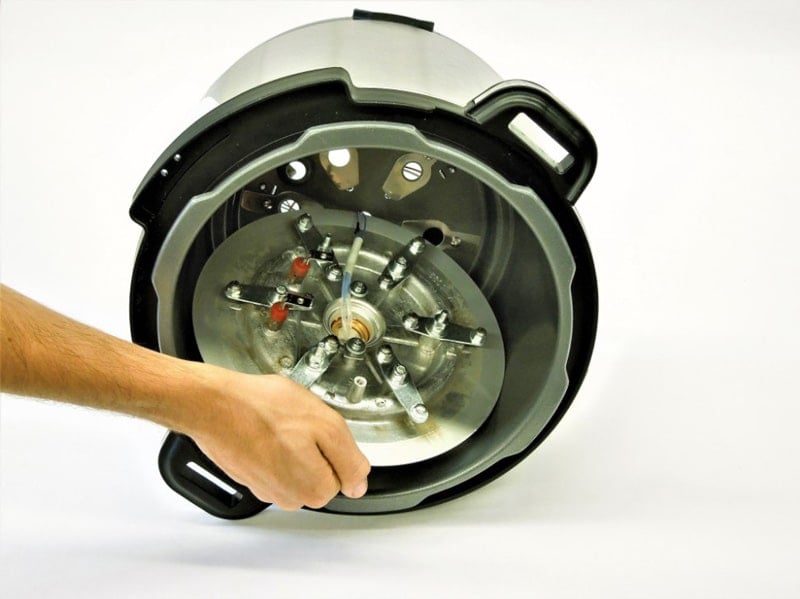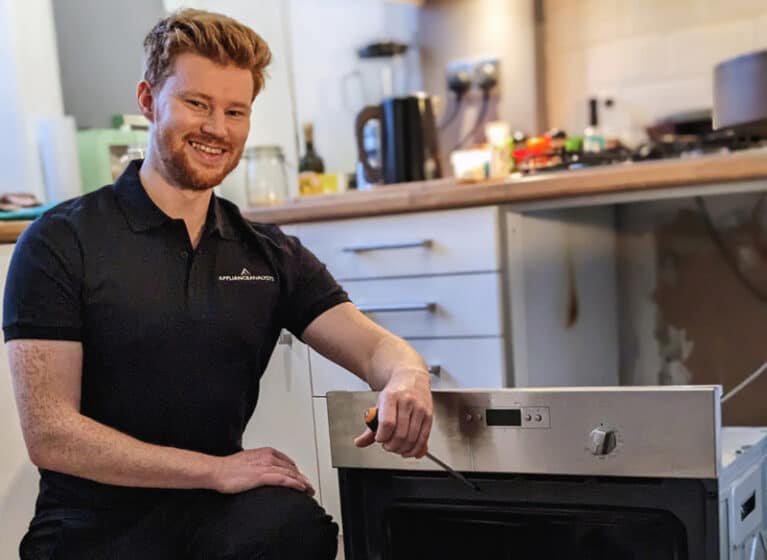Is your slow cooker not heating up? You’re probably very confused about why this is happening. Worry not! Here are 7 possible causes, with fixes.
It’s Friday night, you’re laying back at home after a hard week. You put on the slow cooker and turn on the TV. After a couple of hours, you go back to the kitchen to check on your food, and surprise, surprise! It’s still raw and lukewarm at best. What now?
Slow cookers are a great household ally, but when they fail to heat and cook your food, they can ruin an evening, fast.
If you’ve just about had it with this situation, here are 7 possible reasons why your slow cooker is letting you down, and how you can fix it.
Without further ado, let’s get you back to making delicious meals.
Your Slow Cooker Could Be Failing to Heat up Due To…
- Overfilling
- Compromised lid sealing
- Broken switches
- Broken heating elements
- A malfunctioning thermal fuse
- Broken probes
- Faulty circuit board
#1 Overfilling
Be careful not to fill your slow cooker to the brim
That’s right. I’m starting off this list with something completely unrelated to technical issues. Overfilling your slow cooker can be a problem, as most of them are designed to operate at 2/3 of their maximum capacity.
Exceeding this limit can compromise your slow cooker’s ability to heat up your food properly.
Solution: When preparing a feast for one, try to use additional pots or pans.
I know the idea of having to wash two different pots can be unappealing, but remember, your food will taste much better if you let your slow cooker do its job properly!
#2 Compromised Lid Sealing
The laws of thermodynamics cannot be ignored. Your slow cooker might not be heating up properly because the seal between the lid and the pot itself could be compromised.
As you know, every time you lift a pot’s lid, you’re releasing hot air into the environment, thus jeopardizing heat preservation within it. If the slow cooker’s lid seal is broken or otherwise affected, its ability to preserve heat and increase it within the pot’s chamber can be hindered.

Solution: Make sure that your lid’s seal is undamaged. If you notice any kind of tearing or bending, you’ll have to replace it.
If you’re still within warranty coverage, call your manufacturer and tell them about the problem. Otherwise, go to your nearest spare parts supplier to get a replacement.
#3 Broken Switches
Your switch might be the problem
If any of the switches on your slow cooker are broken, it won’t matter what temperature you choose, the heat won’t rise.
If your slow cooker is not heating up, chances of a faulty switch being the culprit are quite high. In fact, this should be the first technical thing you must be on the lookout for when experiencing these issues.
If you’ve already checked that your slow cooker is not filled beyond its normal capacity and the lid seal is unscathed, here’s what you can do to fix the switch.
Solution: Luckily, replacing a faulty switch on your slow cooker is fairly simple. All you have to do is disassemble it and look for the switch. Once you have located it, disconnect any of the wiring attached to it to remove it.
Please be careful when doing this and always make sure the slow cooker is turned off and unplugged.
#4 Broken Heating Elements
You can’t have heat without a heating element
Your slow cooker’s heating element is the lifeblood of your appliance.
A slow cooker with a broken heating element is like an airplane with no wings, it just won’t work, no matter what you do.

When operating normally, a heating element is what allows the slow cooker to rise in temperature to the desired level you set. In layman’s terms, it converts electrical energy into heat through a series of internal processes.
Of all the potential causes that could explain why your slow cooker is not heating up, this one is probably the most critical.
If your slow cooker has absolutely no signs of temperature increases, this is likely the reason.
Solution: The replacement process is very similar to that of the previous point. You’ll have to take the slow cooker apart and remove any wiring from the heating element.
If you have a multimeter handy, you can test the leads to see if they accept electricity. Positive readings usually mean that the problem lies elsewhere, and the heating element is fine.
#5 A Malfunctioning Thermal Fuse
Your thermal fuse prevents overheating
Thermal fuses within slow cookers are life-savers. These nifty little devices are responsible for regulating your slow cooker’s temperature and prevent it from overheating and catching on fire!
If you’ve ever heard of a fire started by a slow cooker, it was probably caused by a faulty thermal fuse.
Now, don’t reach for the fire extinguisher just yet. Even if this is your slow cooker’s problem, it does not mean it will automatically ignite.
Whenever a thermal fuse fails, it becomes unable to properly measure the temperature in your slow cooker. This causes it to wrongly regulate it, making it a very plausible explanation to your heating mishaps.
Solution: Replace the fuse. If you already took your slow cooker apart to check the components mentioned above, you’re halfway through. Find your thermal fuse, and carefully remove it from the main board. Once you do that, you can simply put a new one in its place and reassemble the appliance.
#6 Broken Probes
A slow cooker’s probe knows when your food is ready
How is every meal cooked in the slow cooker so delicious? You have probes to thank for that. They are responsible for measuring the temperature of your food as it cooks. You can think of it as the thermal fuse’s counterpart.
When the probe fails, the slow cooker has a very hard time determining when the temperature is ideal. This results in a subpar regulation of internal heat, which oftentimes can cause the cooker to not heat up at all.
Solution: You know what I’m about to say! If you already took the slow cooker apart, you’re almost there. Test the probe with a multimeter to get confirmation that it’s faulty.
Once you’re certain, you can buy a replacement at any hardware store.
#7 Faulty Circuit Board
The circuit board is the brain of your slow cooker
Last but not least, if all the possible causes above have not solved your problem, it’s time to think a little bigger. It’s time to look at the circuit board.
Power surges like blackout-generated energy spikes can fry this component and render the slow cooker useless. If you always leave your appliance plugged in, this could be your problem.
Bear in mind that considering this component to be the culprit should be a last resort, and all other possible causes should be explored in detail prior to tampering with it.
I say this because, sadly, if your circuit board is faulty, you’re better off replacing the entire appliance rather than the component itself.
Solution: As stated above, if you have determined that your circuit board is no longer functional, try to find a good deal on a new slow cooker. Some technicians might want to sell you on some repairs, but I’d advise against it, since they will be expensive and probably not worth it!
Conclusion
As it happens with most cooking-related appliances, issues with slow cookers can be very difficult to diagnose, as they’re not always caused by technical flaws.
Sometimes the problem can stem from counterintuitive factors like a compromised lid seal or ignoring the manufacturer’s maximum capacity instructions.
And even when the problem is actually technical, slow cookers are made up of so many little components that perform such vital and specific functions, that having any of them fail can be catastrophic.
If your slow cooker is not heating up the way it should, I’d recommend trying a step-by-step repair to rule out every component as you analyze and test it. This will not only save you time, but also quite a lot of money in unnecessary repairs and spare parts.
Testing your slow cooker is fairly simple, and the disassembly process is not challenging. That being said, do not hesitate to contact a trusted technician if you’re unsure as to how you can replace a specific component.
Always unplug your slow cooker and turn it off before tampering with it! Have fun, and please check out our other articles below. You never know when some extra knowledge will come in handy.
Thank you for reading, stay safe!







